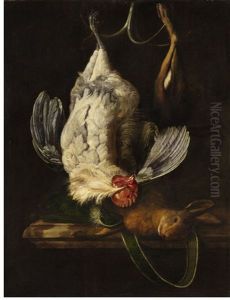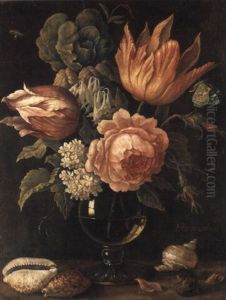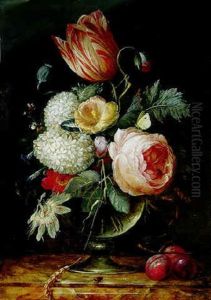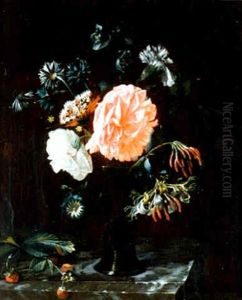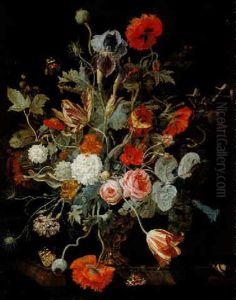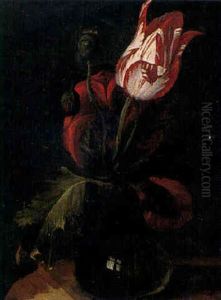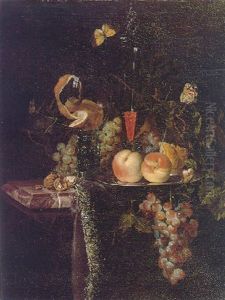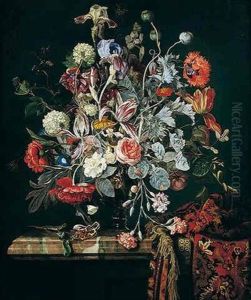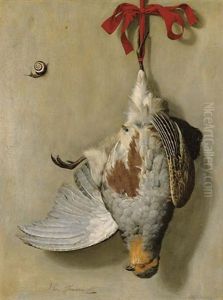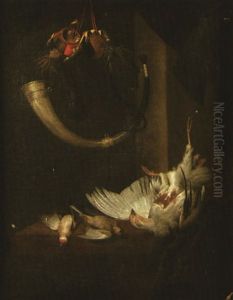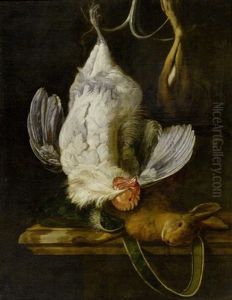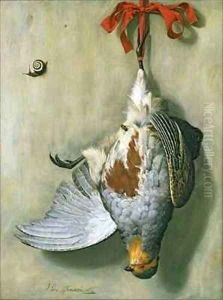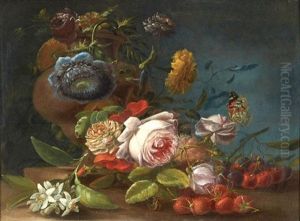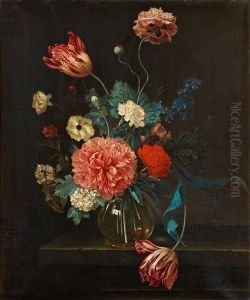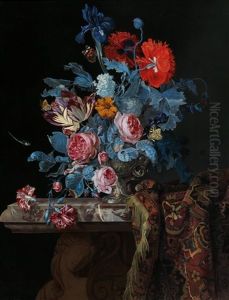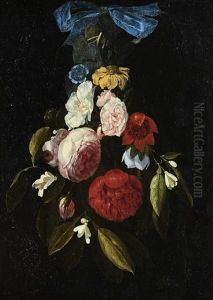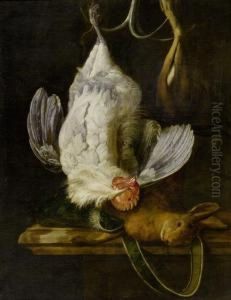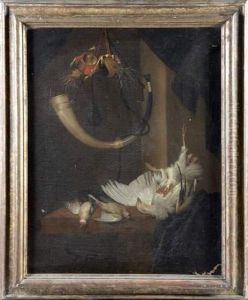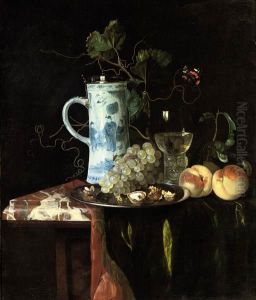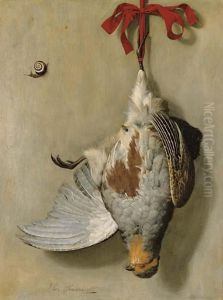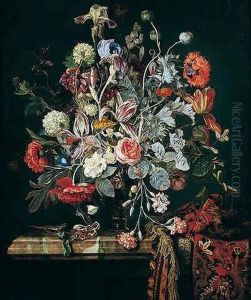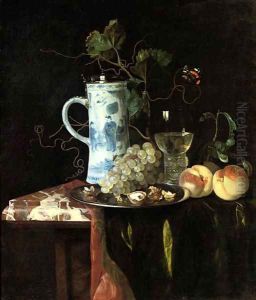Hendrik de Fromantiou Paintings
Hendrik de Fromantiou was a Dutch still life painter who achieved recognition for his elaborate and colorful arrangements of flowers and fruit, as well as his sumptuous banquet still lifes. He was born in Maastricht in the year 1633, at a time when the Dutch Republic was experiencing its 'Golden Age', a period marked by prosperity in trade, science, military, and art.
Fromantiou’s early life and training as an artist are not well-documented, but it is known that he worked in Maastricht, Antwerp, and perhaps in Paris. In his paintings, Fromantiou displayed a high level of craftsmanship and an ability to capture the texture and variety of surfaces, which became his signature style. His compositions often included a rich array of objects such as glassware, metalwork, and textiles, revealing his keen eye for detail and his ability to render materials convincingly.
His career took a significant turn when he was appointed as the court painter to Frederick William, Elector of Brandenburg in Berlin. During his tenure, he became known for his decorative works and contribution to the embellishment of the royal palaces. Fromantiou's works were prized for their opulence and fine detail, and his ability to arrange complex compositions was highly regarded.
Despite his success, details about Fromantiou's personal life and his later years remain relatively obscure. After his time in Berlin, the trail of his career becomes harder to follow. He is believed to have returned to the Netherlands and continued to paint until his death in 1693.
Hendrik de Fromantiou's works are part of the collections of various museums, and they continue to be studied for their contribution to the still life genre. His paintings are characterized by a baroque sensibility, with a dramatic use of light and shadow, and a richness of color that has drawn comparisons with the works of his more famous contemporaries. Though not as widely recognized as some of his peers, Fromantiou's work provides a valuable insight into the opulent tastes and artistic preoccupations of the 17th-century Dutch and German courts.
